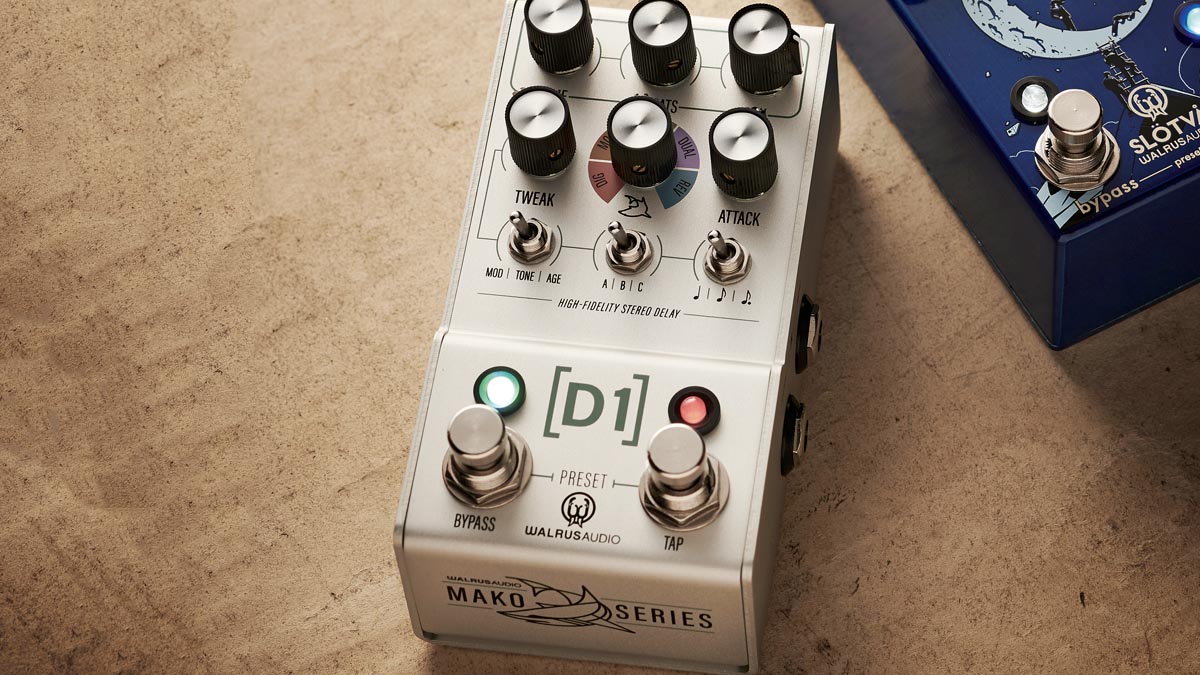Guitar World Verdict
The compact size, presets, tap tempo and hands-on parameter adjustment make this a very practical pedalboard delay.
Pros
- +
USB port supports new updates.
- +
Revamped reverse and tape echo delay.
- +
Stereo width control.
Cons
- -
Not much, but it is not cheap.
You can trust Guitar World
The original Walrus Audio D1 delay pedal has been revamped into a V2 version whose new features include a USB port for future upgrades – leading us to believe a V3 is likely to be delivered via software rather than having to buy a new physical pedal.
The latest version of the D1 features five different delay types (Digital, Mod, Vintage, Dual and Reverse), each with three instantly accessible adjustable Tweak parameters including EQ and adding modulation.

There’s also a dedicated tap tempo footswitch and nine onboard preset slots – or a full 128 if you use MIDI, which also offers full parameter control
The various mono and stereo connectivity options include a welcome addition to this second version, a stereo width control offering widening via a Haas Stereo Effect and the option of various degrees of autopanning.
Vintage is said to be more authentic as a tape echo emulation, and it does sound good, with plenty of control over the sonic nature of the repeats
The original D1 delays always covered a practical range, but two have been revamped for this version: reverse can offer some freaky stuff, especially when just using the fully wet sound; and Vintage is said to be more authentic as a tape echo emulation, and it does sound good, with plenty of control over the sonic nature of the repeats available with EQ and saturation.
The jewel in the crown for sculpting repeats, though, is the Attack knob, softening the attack for fade-ins.
Specs
- PRICE: $349 / £319
- ORIGIN: USA
- TYPE: Delay pedal
- FEATURES: 3x selectable bypass types (True bypass, DSP+True Bypass (trails), and DSP Bypass), 9x onboard presets, tap tempo, MIDI, 60ms to 2s delay time
- CONTROLS: Program selector, Time, Repeats, Mix, Tweak, Attack, Tweak switch (Mod/Tone/Age), Bank switch (A/B/C), Division switch (quarter/8th/ dotted 8th),Tap footswitch, Bypass footswitch
- EFFECTS PROGRAMS: Digital, Mod, Vintage, Dual, Reverse
- CONNECTIONS: Standard inputs (Left/Mono, Right), standard outputs (Left/Mono, Right), MIDI in, MIDI out
- POWER: Supplied 9V DC adaptor (not supplied) 300mA
- DIMENSIONS: 73 (w) x 125 (d) x 60mm (h)
- CONTACT: Walrus Audio
All the latest guitar news, interviews, lessons, reviews, deals and more, direct to your inbox!
Trevor Curwen has played guitar for several decades – he's also mimed it on the UK's Top of the Pops. Much of his working life, though, has been spent behind the mixing desk, during which time he has built up a solid collection of the guitars, amps and pedals needed to cover just about any studio session. He writes pedal reviews for Guitarist and has contributed to Total Guitar, MusicRadar and Future Music among others.


